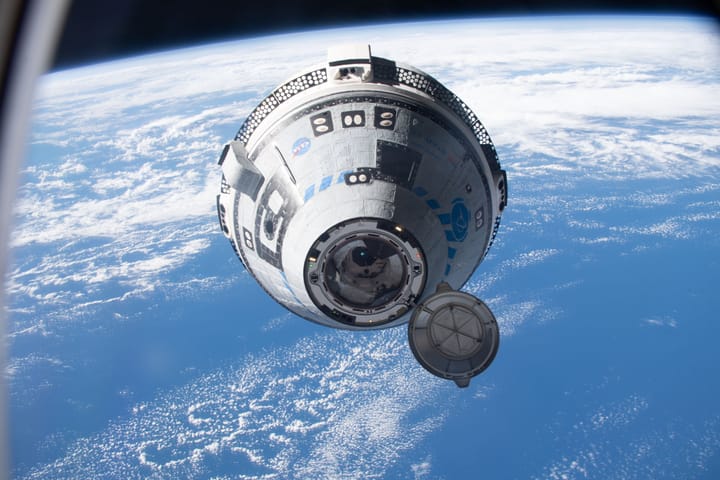In the last 3 years, the face of commercial spaceflight has changed drastically. The first fully civilian (orbital) spaceflight was flown by SpaceX on the Inspiration 4 mission, and with that behind us it’s about to get, well, serious. Commander Jared Isaacman along with a very capable team are about to rewrite the history books.
When the Inspiration 4 mission launched in 2021, the world was captivated by 4 people who went to space, and catapulted spaceflight into the reachable realms of the civilian population. In the space of 3 days, the crew of 4 broke down walls that have been standing since the space race began when Yuri Gagarin launched on a suborbital space flight in April of 1961. In 60 years no civilian had ever gone to space without the presence of a military or governmental commander at the helm. The mission was flown with military precision, and while sponsor and commander Jared Isaacman could have treated the mission as a joyride and invited his buddies to join him, he instead turned it into a professional enterprise with clear goals: To be the first civilian crew to go to space, and to ensure that the mission gave back, which it did – and then some. Using the publicity generated by the mission, a whopping $250 million was raised for St Jude children’s hospital, a facility dedicated to researching treatments for cancer in children.
Forward
Not content with the achievements of Inspiration 4, Isaacman set about creating a new series of civilian missions with SpaceX called the Polaris Program, a set of 3 missions that all have a specific purpose in the mission of rapidly advancing human spaceflight capabilities, and rest assured that these 3 missions are just as orientated towards lofty goals as the first civilian mission had been, and with the mission brief outlined by the Polaris team, the phrase “lofty goals” doesn’t do the mission brief justice.
Polaris Dawn

Polaris Dawn is the first in a series of missions dedicated to breaking down more boundaries for commercial space flight. The first Polaris mission is well into its preparation phase, and one can only marvel at what this mission aims to do. It will be the first civilian space flight to include a spacewalk. A spacewalk, or to put it in professional terms Extra-Vehicular Activity (EVA) has never been done by a non-governmental entity, and it has it’s challenges.
SpaceX have had to make a series of invasive changes to the Dragon space capsule in order to rate it for operation in the open vacuum of space, where all its systems and life support need to function when the Dragon’s hatch is opened and the inside of the craft is exposed to the extreme heat and cold of space, in addition to being in vacuo. The all too popular SpaceX “starman” space suit has also had to be redesigned in order to function as an EVA rated suit that will offer protection from direct exposure to space and greater mobility to the astronauts. While the current suit can protect the crew in the event of a depressurization, it represents little more than a pressurized balloon in its current form.
In addition to the EVA, the mission has a plethora of scientific research lined up that will be conducted while in orbit. The mission has collaborated with 23 partner institutions to conduct scientific research to expand our knowledge of humans adapting, living and working in space. Some of the experiments are well known in missions that have been flown to the International Space Station, dealing with research on space sickness, biological changes to the body in space, and degraded vision due to longer term exposure to micro gravity.

Some of the research this mission plans to conduct though will be unique due to the extremely high altitude of the mission - another differentiator that sets this mission apart from others. The mission’s orbit is so high that it will at certain stages take the craft through sections of the highly radioactive Van Allen belts, which has been unexplored since Apollo 17 returned to Earth in 1972. Not even the Space Shuttle has reached orbits of such altitude, having only flown as high as 621km (386 miles) while on a Hubble Space Telescope servicing mission. Polaris Dawn will (at the limit of Dragon’s performance envelope) fly to an altitude of approximately 700KM (434 miles).
The crew
Isaacman has assembled a solid crew for the Polaris Dawn mission. While Inspiration 4’s goal was to inspire, this mission is a lot more serious, and a crew of great calibre has been selected to ensure its success. Isaacman’s close friend Scott Poteet (or Kidd as he’s known) will fill the role of pilot. Being a former US Air Force fighter pilot and having done a tour with the World famous Thunderbirds aerobatic jet team, he seemed an obvious choice, also having gained valuable experience playing a key role in the planning and execution of the Inspiration 4 mission.

The other 2 positions have been assigned to two of SpaceX’s own employees. Sarah Gillis, who is a Lead Space Operations Engineer at SpaceX has trained astronaut crews for multiple SpaceX missions and has been responsible for developing mission specific training curriculums. She is an experienced Mission Control operator and knows the Dragon space capsule inside and out, and trained the Inspiration 4 crew personally. The final seat was assigned to Anna Menon, who is also a Lead Space Operations engineer and has filled a similar role at SpaceX, but has the distinction of having experience as a biomedical engineer, and thus will fill the role of both a mission specialist and medical officer.
Mission 2
While little details exist about the second mission of the program and its particular goal, the mission is likely to follow a similar format than the first, although there is a chance that it could take on a very special role. Isaacman has been campaigning to obtain the necessary permission to fly a mission to the Hubble Space Telescope in order to boost it’s orbit, and potentially service the ageing wonder of science. Hubble has effectively been replaced by the James Webb Space Telescope that launched in 2021, and if it’s current orbit isn’t boosted, it is set to re-enter Earth’s atmosphere in the next 10-20 years. An agreement between NASA and SpaceX has been signed to investigate the feasibility of this idea and it would come at no cost to the U.S tax payer. Having followed the activities around this campaign though, it seems that the study may be taking very long to complete.
Mission 3
When it was announced what the intent behind this mission was, it illustrated Isaacman’s longer term goals in a very real way, and that is to be the first commander to fly SpaceX’s monolithic Starship. If you’ve been following the development of the Starship you’d know just how ambitious the project is. The rocket is built to fly missions to Mars, and it can only be described as the most ambitious project in the history of human spaceflight. It also sets a very notable president – that SpaceX can rely on civilian astronauts to fly highly risky test flights like these. The first crewed mission of Starship will be a momentous occasion, and it seems only fitting that Issacman be at the helm. By the time Starship is ready to fly humans to space, he will have racked up 3 flights on Dragon in the commander’s seat, and be in an ideal position to test fly the beast with an equally incredible crew.
The Polaris Program is one of the most exciting commercial ventures in history, and it’s a reason to be incredibly excited about the future of spaceflight.
Stay up to date with the Polaris program as it unfolds here. I’ll be covering all the major milestones as they happen.






